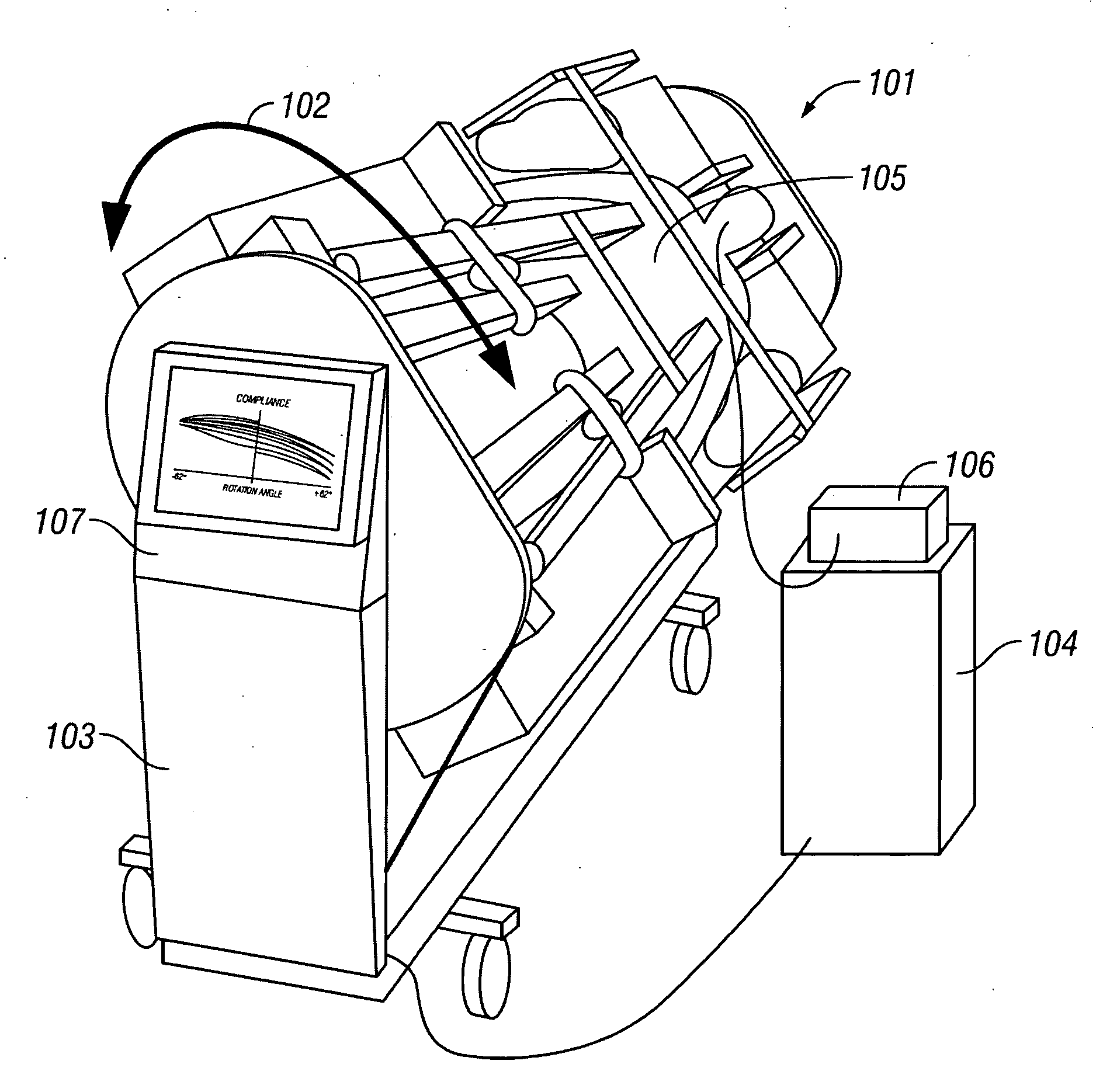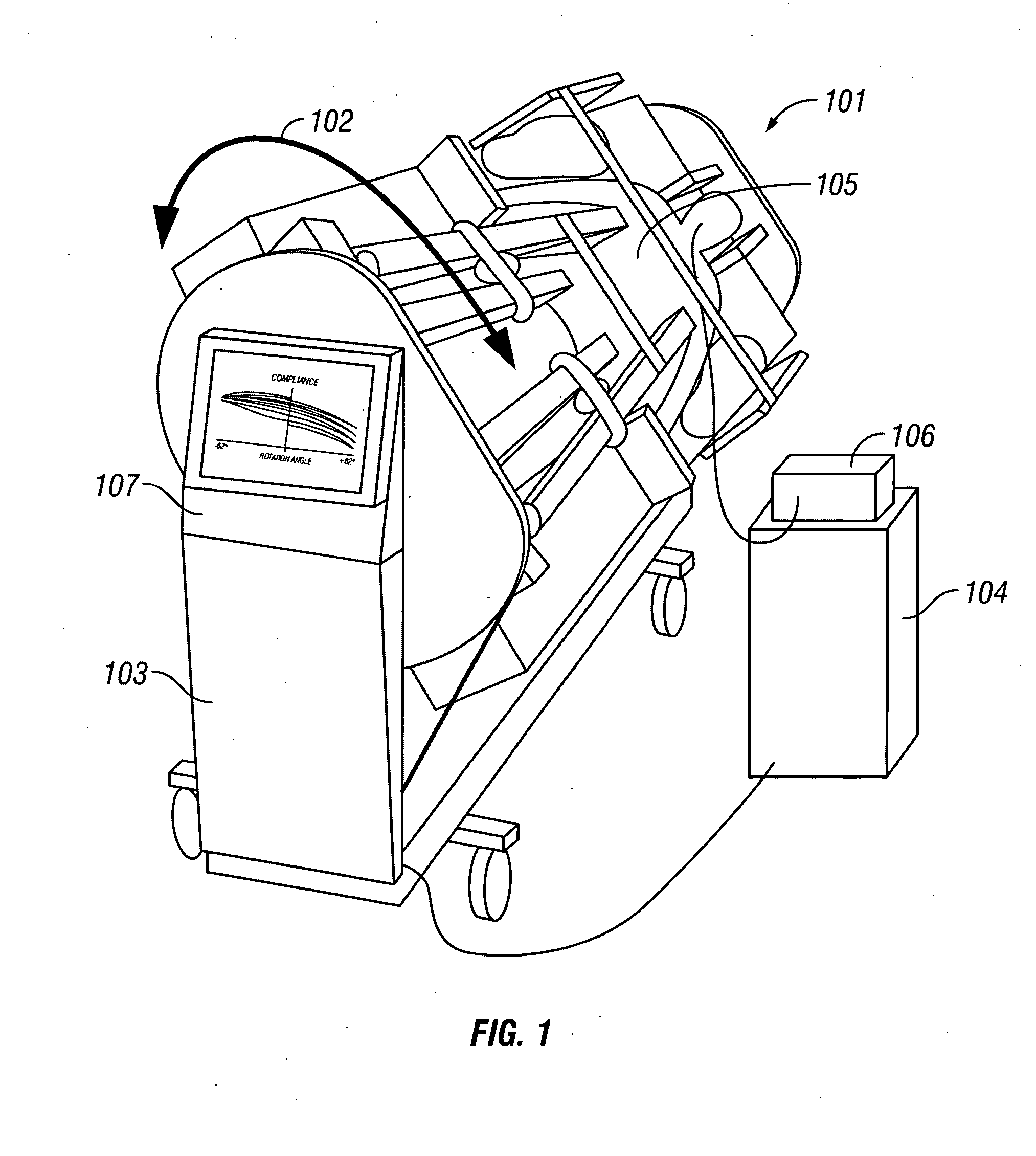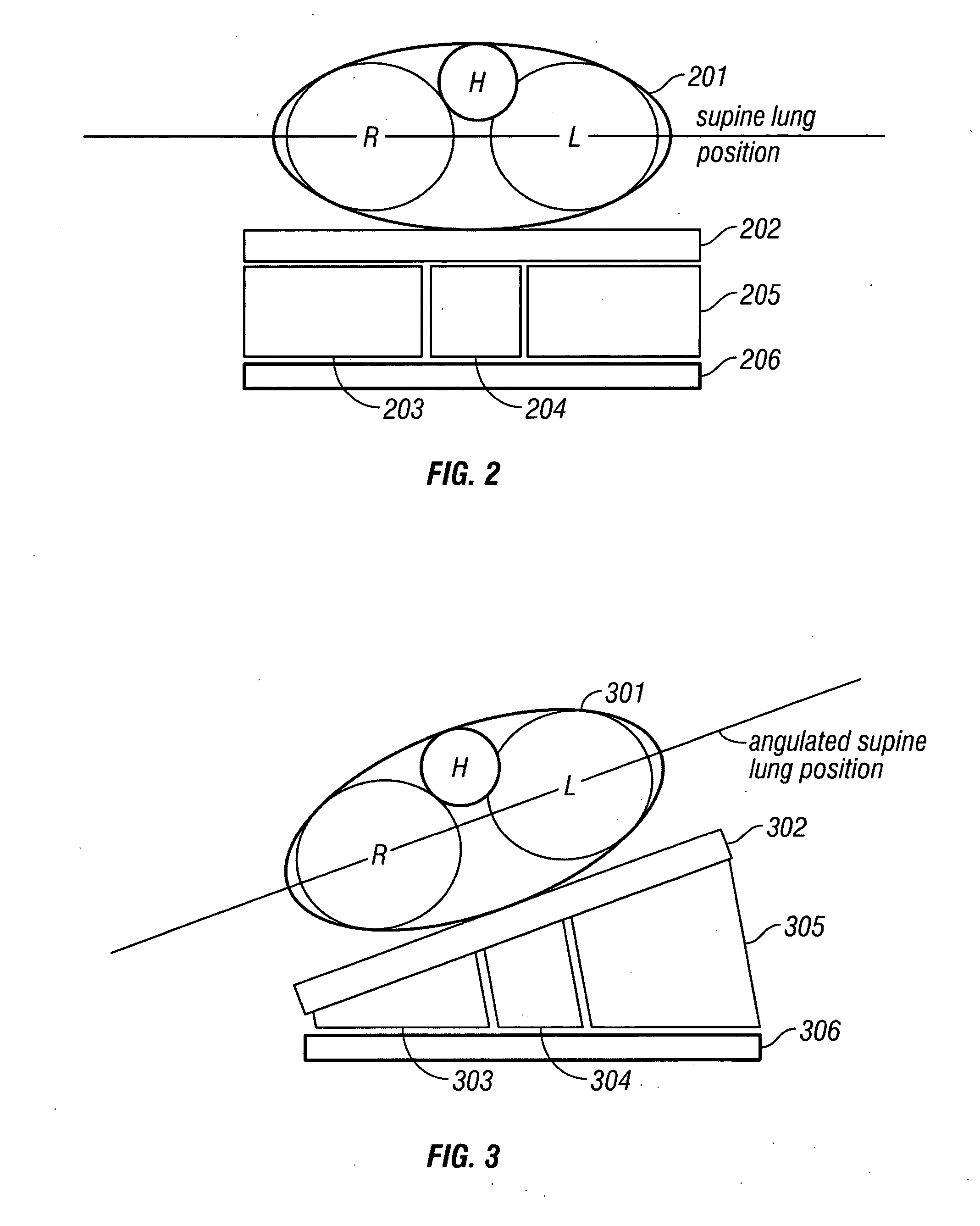Providing automated or manual guidance on dynamic patient positioning based on measured variables for ventilation control
a dynamic patient positioning and variable technology, applied in the direction of instruments, diagnostic recording/measuring, operating means/releasing devices for valves, etc., can solve the negative consequences of respiratory insufficiency that affect both the short and long term outcomes of patients, and the kinetic rotation therapy justifies a broad employment. , the effect of minimizing the cost function
- Summary
- Abstract
- Description
- Claims
- Application Information
AI Technical Summary
Benefits of technology
Problems solved by technology
Method used
Image
Examples
Embodiment Construction
[0050]The terms “comprise” (and any form of comprise, such as “comprises” and “comprising”), “have” (and any form of have, such as “has” and “having”), “contain” (and any form of contain, such as “contains” and “containing”), and “include” (and any form of include, such as “includes” and “including”) are open-ended linking verbs. As a result, an apparatus or method that “comprises,”“has,”“contains,” or “includes” one or more elements possesses those one or more elements, but is not limited to possessing only those one or more elements or steps. Likewise, an element of an apparatus or method that “comprises,”“has,”“contains,” or “includes” one or more features possesses those one or more features, but is not limited to possessing only those one or more features. Furthermore, a structure that is configured in a certain way must be configured in at least that way, but also may be configured in a way or ways that are not specified.
[0051]The terms “a” and “an” are defined as one or more ...
PUM
 Login to View More
Login to View More Abstract
Description
Claims
Application Information
 Login to View More
Login to View More - R&D
- Intellectual Property
- Life Sciences
- Materials
- Tech Scout
- Unparalleled Data Quality
- Higher Quality Content
- 60% Fewer Hallucinations
Browse by: Latest US Patents, China's latest patents, Technical Efficacy Thesaurus, Application Domain, Technology Topic, Popular Technical Reports.
© 2025 PatSnap. All rights reserved.Legal|Privacy policy|Modern Slavery Act Transparency Statement|Sitemap|About US| Contact US: help@patsnap.com



